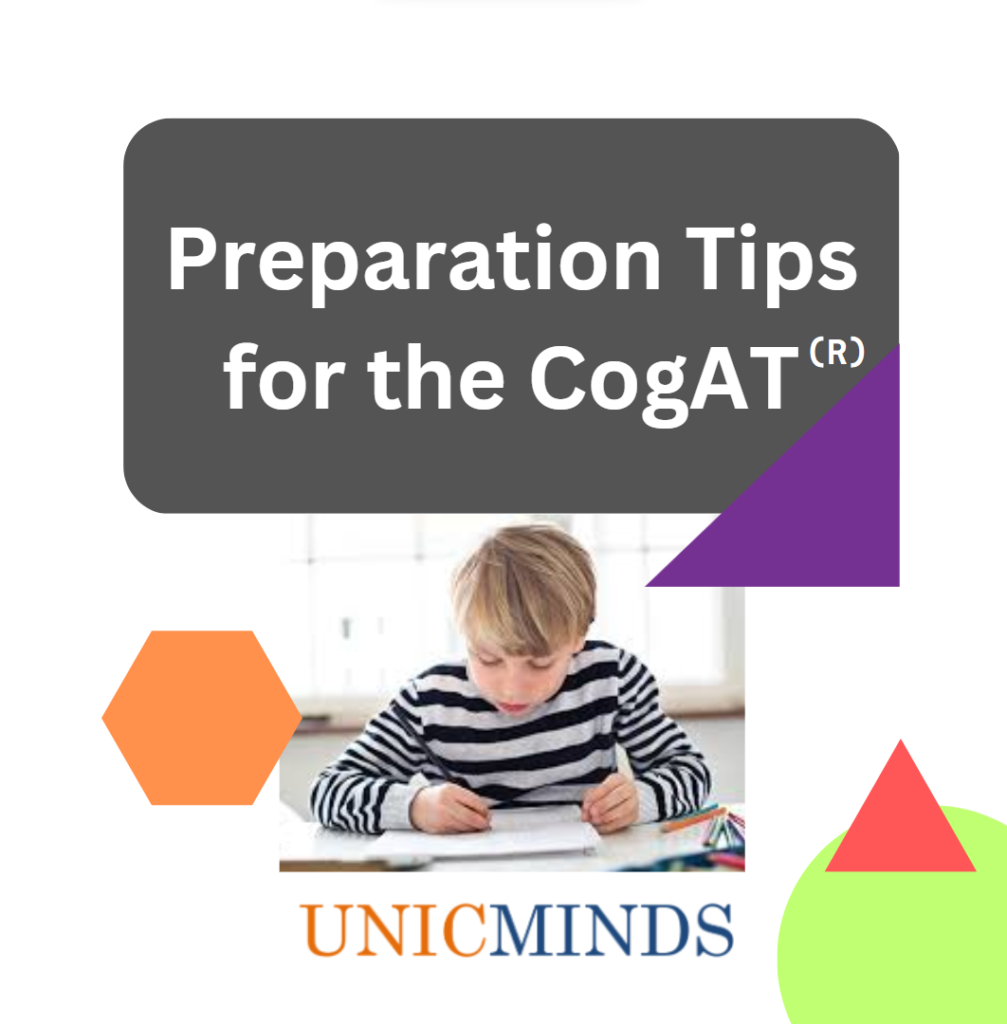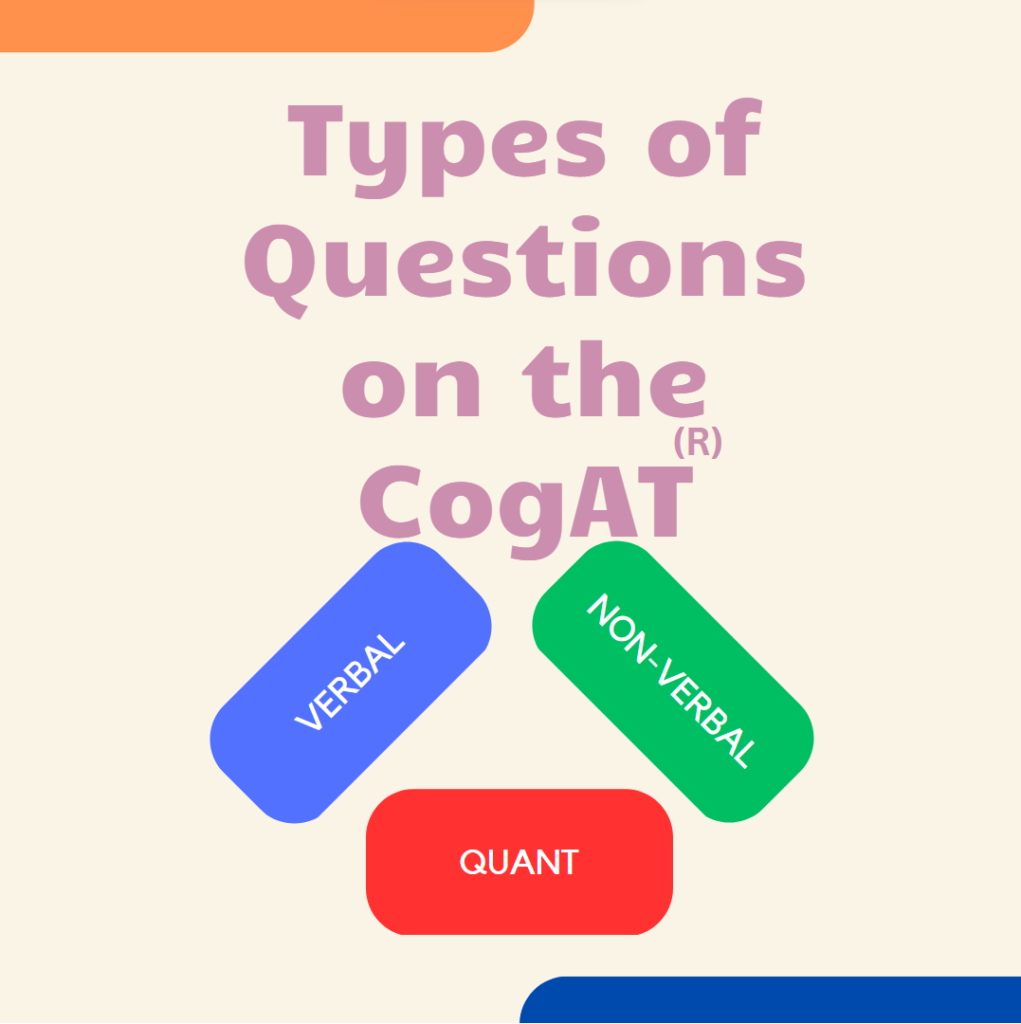Published by Riverside Insights, the CogAT was originally developed in the 1950s and has since gone through many updates. The most recent versions of the test are Form 7 and Form 8. The CogAT is typically administered in a group setting in schools or by a testing partner. The test date and time are determined in advance by the school and are communicated in advance to the parents and students. The administration of the exam is often headed by a staff from the school. The testing partner or the school provides the booklets and answer sheets.
The CogAT is a timed test and the administrator communicates the time limits for each section of the test. Students should pace themselves and complete as many questions as possible within the given time frame. Each student will read the questions from his or her booklet and fill in the corresponding bubble on the answer sheet. It is the responsibility of the school administrations, testing partner and other staff to ensure that there is a focused atmosphere for children to give the exam. There is also remote-testing available for the CogAT in some states. And there are limited days and times available for these remote test slots.
Various Independent School Districts (ISDs) in the U.S. have used the CogAT effectively to identify elementary students who may need the additional challenge of gifted and talented programs. For example, refer here to read about how a previous Gifted Coordinator at Deer Valley UDS used the CogAT to identify Gifted students in his school. In addition, scores on the CogAT for students in grade 3 will be used as a criteria for initial C level placement in grade 4 and grade 5 mathematics and/or English language arts. Based on the student and the grade level, there could be a screener and there could be the full exam. For example, second graders will typically go through a screener, and the later grades will give the full exam.
There are three sections in the test: verbal, non-verbal, and quantitative. Each section is scored separately and you can find the full details of the CogAT test and scoring here. It measures reasoning ability in three domains: Verbal, Quantitative, and Non-Verbal (Visual Thinking). Test scores reflect the cognitive processes which enable an individual to learn new tasks and to solve problems independently. It specifically intends to measure the ability, and not preparation. It is not an academic achievement test used to determine progress in the approved curriculum but an indication of innate ability in verbal, quantitative, and spatial reasoning. Thus, there is no preparation recommended for the test.
The three main types of questions you get in all of the sections are: Analogies (Matrix based or non-Matrix based), Classifications or Series, and Puzzles and Sentence Completion. In sentence completion, younger children will be required to listen to a sentence with a word missing. They will then select the correct image from four possible options to complete the sentence. Older children will read the sentence for themselves and choose from a selection of words. Learn more about the CogAT test, strategies, and practice sets here.
How to prepare to do well on the CogAT test?

- Practice Tests – Even though the schools say that you don’t need to prepare and the central tenet of CogAT is to understand the student’s raw ability, doing a couple of practice tests before the exam will be in good stead for the exam. It just orients your brain for what is expected and what range of questions are a possibility. Practicing with similar questions will build confidence, speed, and familiarity.
- Read English books – Improve your reading skills by reading books. It’ll help you to improve your vocabulary, comprehension, and speed.
- Practice with some Origami apps or with actual paper-cutting and paper-folding to develop visual thinking skills required for the non-verbal part of the exam. This could be a challenging section to visualize achieving a specific shape in paper by folding it.
- Play language games at home such as Scrabble or Mad Libs. Also, continue to speak in English at home if English is not your native to develop communications.
- Be aware of the timing in the tests. Practice not taking too much time on a question. If a question is tough, move ahead and do the other questions. This is easier said than done, and needs to be practiced.
- Last, and the most important – Practice as much as possible, Read books, Practice paper-cutting and origami in different shapes and sizes! Finally, give yourself ample rest before the exam and go with an active and fresh mind. You may want to eat an energy bar before the exam with some balanced fruits and vegetables as your pre-exam meal, but not too heavy; something that can provide you energy slowly and throughout.
Mistakes to avoid while taking the CogAT exam
- Read the Test instructions very carefully. Misinterpreting or misreading the test instructions can lead to unnecessary errors. Check with the administrator if you have any doubts.
- Neglecting Vocabulary Development – The CogAT tests children with fairly strong and developed vocabulary. So, do not underestimate it.
- Neglecting Cognitive Skills – It is important for children to practice different types of puzzles and keep working on cognitive challenges outside of the CogAT types of questions too as this will keep them sharp and will help them be prepared for any new changes in the test questions.
Hope this is useful, thank you.
If you wish to book a free trial class for CogAT preparation, click here – book a free CogAT prep trial class.
Buy CogAT practice exams, tutoring, and questions.
The Cognitive Abilities Test (CogAT or COGAT) are registered trademarks of Riverside Publishing.
You may like to read: English Root Words for 9 Year Old




